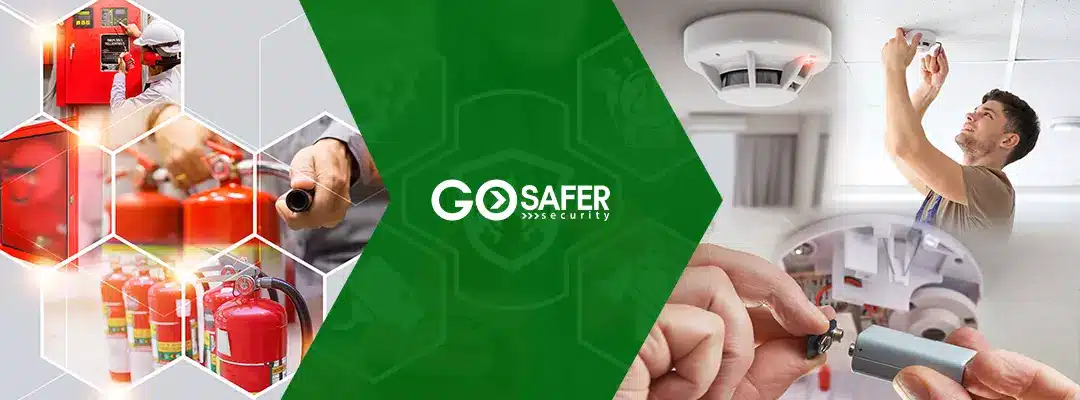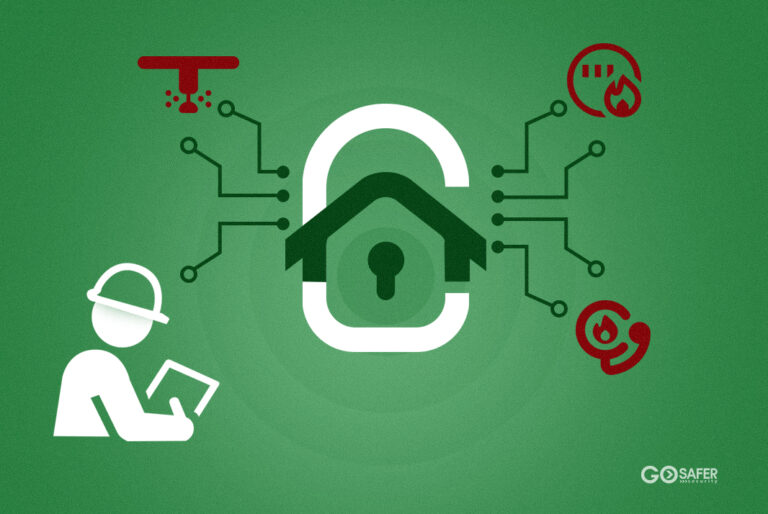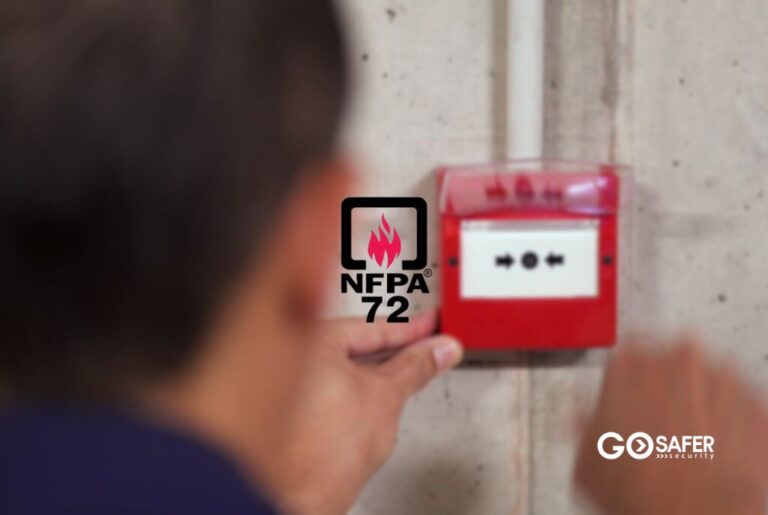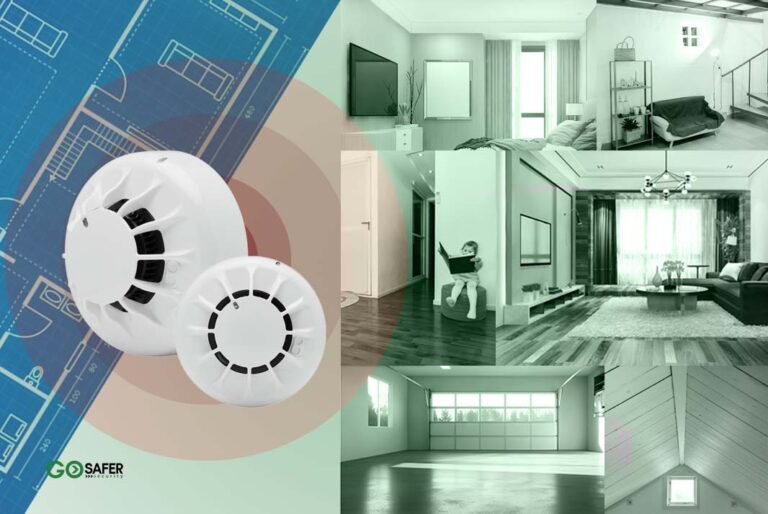Fire alarm and life safety systems are essential components of any building, providing early warnings and critical response mechanisms to protect lives and property. Whether in a home, office, or industrial setting, these systems help detect and respond to potential fire hazards, ensuring safety for occupants. This article explores the essential elements of fire alarm and life safety systems, offering detailed insights into their functionality, components, and importance.
Table of Contents
ToggleWhat is a Fire Alarm & Life Safety System?
A fire alarm and life safety system is an integrated network of devices designed to detect and notify occupants of potential fire hazards. These systems not only alert building occupants but also facilitate emergency response through automated safety mechanisms.
The Key Components of a Fire Alarm & Life Safety System
A complete fire safety system consists of multiple elements working together to detect, alert, and suppress fires while ensuring a safe evacuation. Let’s explore the most critical components.
Fire alarm systems consist of multiple elements working together to ensure safety. The main components include:
1. Fire Alarm Systems: The First Line of Defense
Fire alarm systems are designed to detect smoke, heat, or flames and immediately alert building occupants.
Types of Fire Alarm Systems:
- Addressable Fire Alarm Systems – Can pinpoint the exact location of the fire.
- Conventional Fire Alarm Systems – Divides a building into multiple detection zones.
Essential Components:
- Smoke & Heat Detectors – Detect fire hazards early.
- Manual Pull Stations – Allow occupants to trigger alarms.
- Alarm Control Panels – The central unit that processes fire alerts.
2. Fire Alarm Monitoring: 24/7 Emergency Response
A fire alarm system is only as good as the response time. Fire alarm monitoring services ensure that emergency responders are notified immediately when a fire is detected.
Why Fire Alarm Monitoring is Essential:
- Ensures 24/7 protection, even when buildings are unoccupied.
- Reduces fire damage by enabling faster firefighter response.
- Prevents false alarms with professional verification.
3. Fire Suppression Systems: Controlling Fires Effectively
Fire suppression systems, including fire sprinklers, play a crucial role in containing and extinguishing fires before they spread.
Types of Fire Sprinkler Systems:
- Wet Pipe Sprinklers – Always filled with water, ready for immediate action.
- Dry Pipe Sprinklers – Used in areas where freezing temperatures are a concern.
- Pre-Action Sprinklers – Prevent accidental discharge, ideal for data centers.
4. Exit & Emergency Lighting: Ensuring Safe Evacuations
During a fire, power failures and smoke can obstruct exit pathways. Emergency lighting ensures that occupants can evacuate safely.
Critical Components:
- Illuminated Exit Signs – Clearly mark emergency exits.
- Backup Power Supply – Ensures lights stay on even during power outages.
5. Fire Extinguishers: Immediate Fire Suppression Tool
Fire extinguishers allow quick action against small fires before they escalate.
Types of Fire Extinguishers:
- Class A: Paper, wood, and textiles.
- Class B: Flammable liquids and gases.
- Class C: Electrical fires.
Regular Inspections Are Required:
- Ensure proper pressure levels and functionality.
- Replace expired fire extinguishers.
Types of Fire Detection Technologies
Different fire detection technologies ensure maximum safety:
- Smoke Detectors: Ionization and photoelectric sensors detect different types of fires.
- Heat Sensors: Detect rapid temperature changes and fire conditions.
- Carbon Monoxide Sensors: Identify CO buildup, a sign of fire and toxic gas leaks.
Alarm Notification Devices and Their Role
Effective alarm notification is crucial for evacuation:
- Sirens and Horns: Audible alerts for immediate evacuation.
- Strobe Lights: Essential for hearing-impaired individuals.
- Voice Evacuation Systems: Provide clear instructions to occupants.
Fire Suppression Systems and Their Importance
Beyond detection, fire suppression systems actively combat fires:
- Sprinkler Systems: Automatically douse flames upon fire detection.
- Fire Extinguishers: Manual firefighting tools for initial response.
- Gas Suppression Systems: FM-200 and CO2 systems used in sensitive environments.
Monitoring and Control Panels
- Fire Alarm Control Panel (FACP): Central hub managing alarms and responses.
- Remote Monitoring: Allows real-time system tracking and emergency dispatch.
Emergency Communication and Mass Notification Systems
These systems provide critical information during emergencies:
- Public Address Systems: Allow emergency personnel to relay instructions.
- Mobile Alerts: Notify occupants via SMS or digital platforms.
Regulatory Standards and Compliance
Fire safety systems must adhere to regulations:
- NFPA Standards: Set guidelines for system design and operation.
- OSHA Regulations: Workplace safety requirements.
- Building Code Compliance: Ensures legal adherence to fire safety protocols.
Testing and Maintenance of Fire Alarm Systems
Routine testing ensures reliability:
- Weekly and Monthly Tests: Check detector functionality.
- Professional Maintenance: Prevents malfunctions and false alarms.
The Role of Fire Safety Training
Educating occupants reduces risks:
- Fire Drills: Enhance preparedness.
- First Aid Training: Helps in emergency response.
Choosing the Right Fire Alarm System for Your Property
Considerations when selecting a system:
- Building Size & Occupancy: Determines system capacity.
- Risk Assessment: Identifies specific fire hazards.
Emerging Trends and Technologies in Fire Safety
The future of fire safety includes:
- Smart Fire Alarms: AI-driven detection.
- IoT Integration: Real-time monitoring via mobile devices.
- Wireless Solutions: Increased flexibility and efficiency.
Conclusion
Fire alarm and life safety systems are indispensable for safeguarding lives and property. By understanding their key components, ensuring compliance, and staying updated on technological advancements, property owners can enhance fire safety and emergency preparedness.







